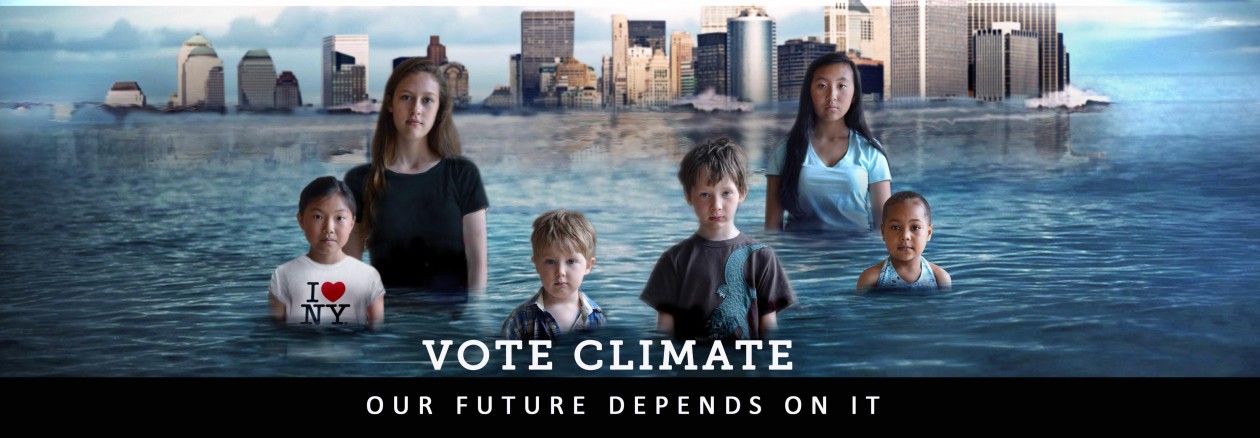- CO2 from fossil fuels we burn today will warm the earth for centuries. The “extra blanket” that we’re putting on the atmosphere each year by burning fossil fuels lasts pretty much indefinitely because it takes a very long time for natural processes to convert the carbon back into inert forms of geological carbon (like limestone). There’s no known way to “kick off the extra blanket” when we – or our kids – decide that it’s gotten too warm.1
Notes
1www.skepticalscience.com/co2-residence-time.htm – makes the point that a common denier argument is that on average a CO2 molecule lasts 5 years in the atmosphere, but this is actually an irrelevant obfuscation since in most cases when a molecule of CO2 is absorbed by the ocean it is merely swapping places with a molecule that is outgassed. What matters is the net amount in both the atmosphere and the oceans and not the average time an individual molecule survives in the atmosphere. A good graphic of the interactions (but not of the net flows) is at wikipedia.org/wiki/Solubility_pump#mediaviewer/File:CO2_pump_hg.svg.
- Some CO2 is absorbed by the oceans, but that may lead to collapse of the entire food chain in the oceans! The one significant way that the excess CO22 we’re adding to the atmosphere is offset is by the oceans absorbing some of it. But ocean absorption of CO23 is actually another problem because it moves the oceans slightly in the acidic direction on the pH scale, and this “acidification of the oceans”4 could lead to collapse of the entire food chain in the oceans.
Notes2“excess CO2” refers to CO2 that is beyond the “natural exchange” of plants growing and dying and of respiration by people and animals.3 various sources report that oceans have absorbed about 50% of excess CO2 emitted since the start of the industrial revolution; various studies also report that in more recent years ocean absorption has been about 25% of current emissions; the difference is thought to be indicate a reduction in the ocean’s capacity to absorb more CO2. Sources:
- scripps.ucsd.edu/programs/keelingcurve/2013/07/03/how-much-co2-can-the-oceans-take-up
- www.globalcarbonproject.org/carbonbudget/archive/2011/CarbonBudget_2011.ppt (page 21)
- news.nationalgeographic.com/news/2004/07/0715_040715_oceancarbon.html (says oceans have absorbed half of all since industrial revolution)
4ocean.nationalgeographic.com/ocean/critical-issues-ocean-acidification
- Climate change will bring expensive and dangerous impacts! Some people think that warmer temps will just mean more days at the beach. But the near-unanimous consensus of climate, biological and health scientists is that the net effect of continuing our current rate of fossil fuel use will be very negative and possibly catastrophic for our own kids and grandkids later this century. Besides rising sea levels (from glaciers and ice caps melting), one of the other most basic, predictable and troublesome impacts will be that violent storms, floods, droughts, famines and wars over water and food will all increase.5 Here’s why: 1) warmer air can hold more water vapor; 2) when warm air with greater amounts of water vapor hits a cold air mass (and the rotation of the earth will still produce both warm and cold air masses), the rain will be heavier, more geographically concentrated and more likely to produce violent storms; 3) more concentrated rains will produce both more floods and more droughts; 4) which will put more people in desperate situations for food, water and other necessities.
- Do we want to take this kind of risk with our children’s and grandchildren’s futures? Current patterns of fossil fuel use have us on a path for global average temperatures to increase by as much as 4 degrees Celsius by 2100 (that’s 7.2⁰ Fahrenheit)! Warming of more than 2⁰ C6 puts our grandchildrens’ climate into the realm of extreme and unpredictable negative impacts.
- “A stitch in time saves nine.” or “Pay me now or pay me (more) later.” Climate scientists have identified a number of “positive feedback” effects of climate change that will act as amplifying or multiplier effects. You could imagine that there might also be side effects that would diminish the problem, but unfortunately the most significant known side effects all make the problem worse. And, as we continue to warm the planet, we’re risking that we will get to “tipping points” where multiplier effects strongly kick in, making the problem much worse and possibly putting it beyond our ability to slow it down. An example of a multiplier effect is the “albedo effect” of ice in the polar regions: ice reflects some of the sun’s energy back into space; but as the atmosphere warms, the total extent of glaciers and ice caps decreases, leaving darker surfaces of water or land which will absorb more of the warmth from sunlight – and thus will speed up the overall warming.
- Let’s not play Russian Roulette with our future! The near-unanimous consensus among climate scientists is that to maintain a climate similar to what humans have known in their entire 10,000 history, we need to limit the warming to 2 degrees Celsius (about 4 degrees Fahrenheit). Because of CO2’s long life in the atmosphere, limiting warming to 2 degrees Celsius requires that we must begin to sharply reduce our use of fossil fuels THIS DECADE.
